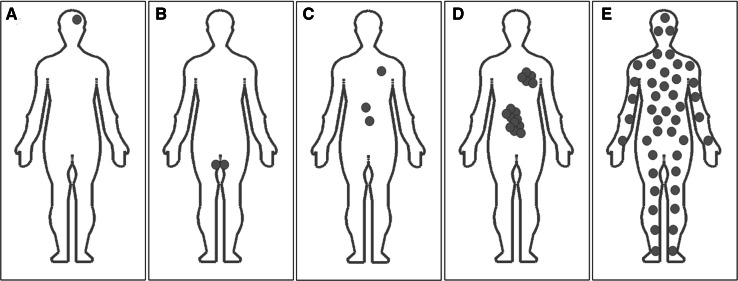Fig. 1.
Various distribution of mutant cells in the human body and different types of mosaicism in particular individuals. In somatic mosaicism (a) mutant cells may appear with different mosaic ratio in patient’ distinct body tissues but not in gonads. As gonadal mosaicism refers to genetic variation in the genomes of germline cells within an individual it may be recognized in testes (b) and ovaries. Examples of low-grade (c) and medium-grade (d) somatic mosaicism in endoderm derivatives (epithelial lining of digestive tract and respiratory tract) point to quantitative difference in mosaic ratio. Constitutional somatic mosaicism (e) refers to the presence of normal and abnormal cells with a mutation recognized with the constant mosaic ratio (or almost unchanging mosaic ratio) in various tissues in the examined individual

